Cholecystectomies, or gallbladder removal surgeries, help fix gallbladder problems. Dr. Valeria Simone provides a clear explanation of the two primary types of surgery: laparoscopic surgery and open surgery. People who have gallstones may feel better after having this surgery. Laparoscopic surgery often allows for a faster recovery than open surgery.
Key Highlights
- In a cholecystectomy, your doctor surgically removes the gallbladder. People often go through this procedure for gallbladder issues.
- Laparoscopic cholecystectomy and open surgery are the two options most often used.
- This surgery is often advised for issues like gallstones that can block the flow of bile.
- Patients often experience faster recovery with laparoscopic cholecystectomy than with open surgery.
- While cholecystectomy is generally safe, it does have risks like bleeding and infection, just like any surgery.
- After the surgery, patients usually need to change their diet for better recovery.
Understanding Cholecystectomies
A cholecystectomy is a surgical procedure where doctors remove the gallbladder. Your gallbladder is a tiny organ located beneath the liver and close to the pancreas. Its main job is to store bile, which is important for digesting fats.
This surgery is safer and simpler now because of new medical technology. Doctors often recommend this procedure after checking the patient’s symptoms, medical history, and imaging tests.
Definition and Purpose of Gallbladder Removal (Cholecystectomies)
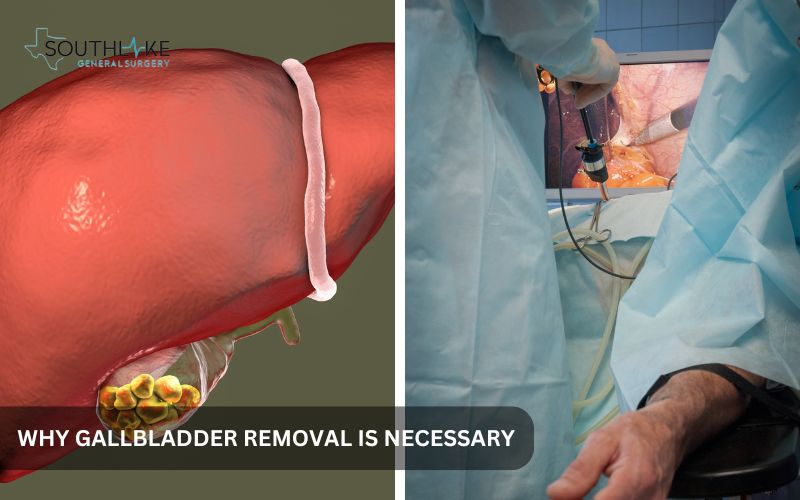
In a cholecystectomy, the gallbladder is surgically removed. It’s important to note that gallstones can accumulate in the gallbladder.
Following the surgery, your digestion will continue to function normally and the bile stored in the gallbladder flows straight from the liver to the small intestine.
Many people decide to have this surgery when their lifestyle or medicines do not solve their gallbladder problems.
The surgery aims to fix how you digest food. It also wants to make your life better. This happens by removing the gallbladder.
The Necessity of Cholecystectomy in Gallbladder Health
Cholecystectomy is surgery done to fix gallbladder problems. These problems can include gallstones or inflammation. If these issues are not treated, they can cause pain, infections, and damage to other organs.
Chronic inflammation can make the gallbladder wall thicker over time. This change can affect how it works and increase the risk of complications. Choosing to undergo a cholecystectomy involves considering various important factors.
First, we look at the symptoms and the patient’s medical history. Test results are also important. We must consider how often attacks occur and their severity.
It is key to think about possible complications too, such as infections or blockages. Lastly, the overall health of the patient is a major part of this choice.
Cholecystectomy is a surgery that solves gallbladder problems for good. This procedure prevents future issues and improves the patient’s quality of life. Taking out the gallbladder eliminates pain, infections, and serious health risks that come from long-term gallbladder problems.
Types of Cholecystectomies Procedures
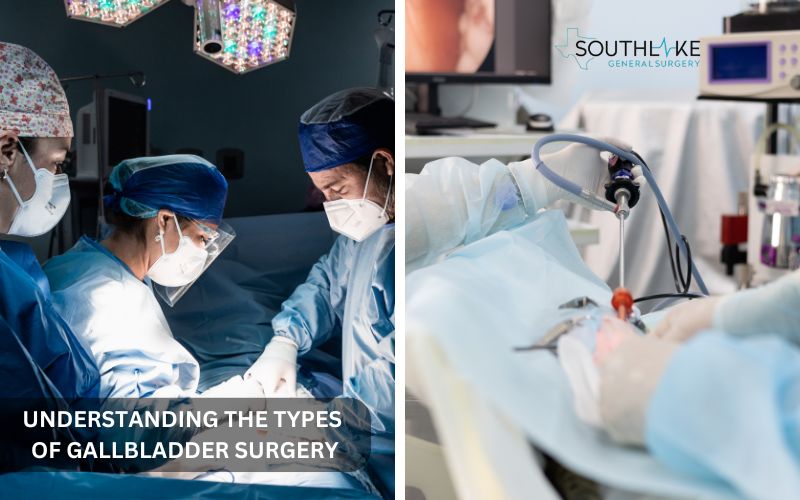
There are two main types of cholecystectomies. Laparoscopic cholecystectomy and open cholecystectomy are two types of surgical procedures used to remove the gallbladder.
Laparoscopic cholecystectomy is a type of surgery that uses small incisions in the abdomen. A surgeon makes these small cuts and then inserts a laparoscope. A laparoscope is a slim tube equipped with a camera. This allows the surgeon to visualize the gallbladder during the procedure.
Open cholecystectomy requires making a larger incision in the abdomen. The larger incision provides the surgeon with direct access to the gallbladder.
The decision to choose between laparoscopic surgery and open surgery is influenced by the severity of the gallbladder problem. It also relies on the patient’s overall health and the surgeon’s experience.
Traditional Open Surgery vs. Laparoscopic Surgery
Open surgery, which is also called open cholecystectomy, and laparoscopic cholecystectomy are two ways to remove the gallbladder. These options mostly depend on the patient’s health and the surgeon’s recommendation.
The biggest difference is how much the procedure affects the body. This affects how long it takes to recover and how much pain there is after the surgery.
Laparoscopic cholecystectomy is a kind of surgery that is not very invasive. It is done using several small cuts in the abdomen.
During the operation, doctors use special tools. A laparoscope is a valuable tool that comes equipped with a camera. The camera assists in visualizing and removing the gallbladder. This method usually causes less pain, leaves small scars, and helps you get better quickly.
Open surgery involves creating a larger incision in the upper abdomen to access the gallbladder. This method is safe. It’s important to note that this often means a longer hospital stay. The recovery time tends to be longer when compared to laparoscopic surgery.
Here’s a comparison of the two methods:
- Incision Size: Laparoscopic surgery uses small incisions. Open surgery needs a larger incision.
- Pain: Laparoscopic surgery usually hurts less. Open surgery can be more painful.
- Recovery Time: People recover faster from laparoscopic surgery. Open surgery takes longer for recovery.
- Scarring: Laparoscopic surgery causes little scarring. Open surgery tends to result in a more prominent scar.
Preparing for Your Cholecystectomy
Preparing for a cholecystectomy is very important. You need to follow key steps to stay healthy before the surgery. Your healthcare team is here to offer you clear and helpful instructions. Your medical history and the specific type of surgery you will undergo will play a significant role in this decision.
Usually, this means you should not eat or drink anything for some time. You also need to avoid certain medicines that can raise the risk of bleeding. Also, make sure to plan for a ride home after the procedure.
Pre-Surgical Assessments and Considerations
Before your cholecystectomy, you will need to do several tests to check your health. These tests usually include:
- Look at your medical history
- A physical checkup
- Blood tests
It’s important to share the following information with your healthcare team.
- Health problems
- Allergies
- List of all the medications you are currently taking, including any supplements and over-the-counter medications.
During a cholecystectomy, you will likely receive general anesthesia. Your anesthesiologist will discuss the plan for anesthesia with you. They are more than willing to answer any inquiries you may have.
On the morning of your surgery, you may be instructed not to eat or drink anything for a while. This ensures that your stomach remains empty throughout the surgical procedure.
Following your surgeon’s advice is important for a good recovery after surgery. If you have any questions or concerns before your surgery, you can reach out to your healthcare team for help.
What Patients Need to Know Before Surgery
Before your gallbladder removal, it’s good to understand what will happen. Be sure to pay attention to what your healthcare team says. When you have the surgery, they’ll give you general anesthesia, so you won’t feel anything.
On the day of your surgery, follow the fasting rules your doctor gives you. This usually means no food or drink before the surgery. However, if you need to take your medication, you can sip some water.
It is essential to inform your surgeon about all the medications you are currently using. This means both prescription and non-prescription drugs, along with any supplements. Certain aspects might require modification or cessation prior to the surgical procedure.
Apprehension of the procedure is a common reaction. However, knowing what to expect and following the instructions can help everything go smoothly.
- Be sure to make transportation arrangements for your return home prior to your treatment. Driving yourself won’t be an option.
- Feel free to share any concerns you might have with your surgeon.
- Ask them about what you should do before surgery for better understanding.
The Cholecystectomy Procedure Explained
The cholecystectomy procedure is when a doctor removes the gallbladder. You will be asleep during this surgery because of general anesthesia.
The most common type is laparoscopic cholecystectomy. In this method, the doctor uses small tools and a laparoscope through tiny cuts in your abdomen. If the case is more complicated, the doctor may choose to do an open cholecystectomy.
This method needs a larger incision to work. Following the surgical procedure, a temporary drainage system might be utilized to eliminate excess fluids.
Step-by-Step Process of Laparoscopic Cholecystectomy
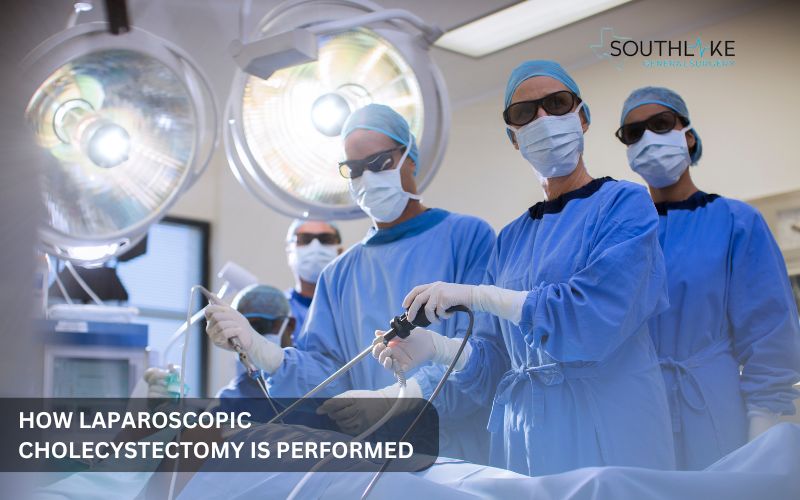
Laparoscopic cholecystectomy is a surgical technique characterized by its minimally invasive approach, aimed at removing the gallbladder.
Many people pick this method because it is less invasive. It causes less pain and helps them recover faster than open surgery. The surgery starts with general anesthesia. This ensures the patient remains in a state of unconsciousness and ease during the physician’s procedure.
The surgeon begins by making several small cuts. These cuts are often near the belly button and on the upper right side of the abdomen. A laparoscope, a thin tube equipped with a small video camera, is introduced through one of these incisions. The method enables the surgeon to visualize the surgical area with enhanced clarity on a display.
Subsequently, the surgeon introduces carbon dioxide gas into the abdominal cavity. This makes space for working. Then, special tools are used through the other cuts. They carefully take out the gallbladder from nearby areas like the liver, bile duct, and small intestine.
After this, the gallbladder is removed through one of the cuts. The stitches help to close the cuts, and a bandage is applied over them for protection.
Here’s an easier outline of the steps for laparoscopic cholecystectomy:
- Anesthesia: They give you general anesthesia.
- Incisions: They create tiny incisions in your abdomen.
- Laparoscope Insertion: A laparoscope is placed to check the area for surgery.
- Abdominal Inflation: They use carbon dioxide gas to make space.
- Gallbladder Detachment: They use special tools to detach the gallbladder.
- Gallbladder Removal: The gallbladder is removed through a cut.
- Closure: They close the cuts and put on a bandage.
What to Expect During Open Gallbladder Surgery
Open cholecystectomy is not as common as laparoscopic cholecystectomy, but it can still be the best choice in some cases. This type of surgery requires a larger incision in the upper abdomen.
A larger cut allows the surgeon to see the gallbladder and the areas around it better. This method is preferred for a variety of reasons. These include severe inflammation, past abdominal surgeries, or problems that come up during laparoscopic surgery.
- The surgery aims to remove a gallbladder that is causing issues.
- A larger incision means the surgery is done differently and has a longer recovery time.
- Open cholecystectomy is usually safe and effective, but it often needs a longer hospital stay, usually several days. It also takes more time to recover compared to laparoscopic methods.
After surgery, the healthcare team keeps a close eye on patients for any issues. They provide pain relief as needed. Patients may need to change their diet to help with healing.
The healthcare team will give clear directions on how to take care of the incision, which activities are okay, and when to come back for follow-up appointments.
Post-Operative Care and Recovery
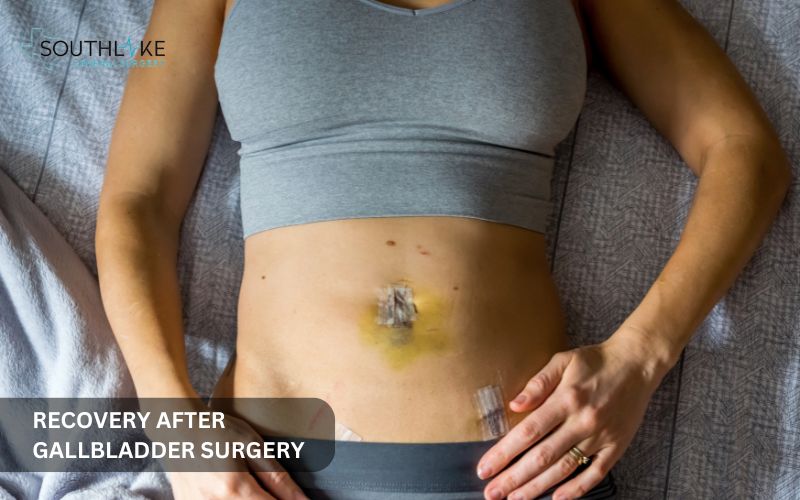
Following your cholecystectomy, your medical team will provide you with specific guidelines. They will explain how to manage your pain, take care of your wound, and change your diet. Adhering to these steps is crucial. Doing so will help you heal well and reduce the chance of any problems.
- Start returning to your normal activities slowly. Begin with easy tasks and increase them as you feel ready.
- Attend all follow-up appointments with your surgeon. This is important for monitoring and getting help.
Immediate Aftercare Following Cholecystectomy
After a cholecystectomy, taking care is very important. It helps manage pain, watch for issues, and support recovery. Following the surgical procedure, individuals typically move to a designated recovery space. The healthcare team diligently observes vital signs as the effects of anesthesia start to wear off.
Pain medication is given if needed to help with pain at the incision sites. Some patients may feel shoulder pain. This pain happens because of leftover carbon dioxide gas from the laparoscopic surgery. Fortunately, this shoulder pain usually goes away in a few days.
- Take it easy and slowly do more when you feel ready.
- Make sure your incision areas stay clean and dry.
- Follow the wound care advice from your healthcare team.
- Eat a balanced diet and change it a little if necessary.
- Contact your surgeon immediately if you observe any indications of infection or have concerns.
- Listen to your doctor about medications, supplements, and how much you can move for a safe recovery.
Long-Term Recovery: Diet and Lifestyle Adjustments
Long-term recovery after gallbladder removal means returning to good health and adapting to life without a gallbladder. Usually, individuals can return to their usual routines within a few weeks. They often have smaller scars from the surgery. A special diet is not usually necessary, but eating healthy can help boost your overall well-being.
Doing regular exercise every day helps your digestion and recovery. Listen to your body’s signals. Slowly add more activity as you feel stronger and have more energy. Most people feel fine without a gallbladder. Bile still helps digest fats, even without that organ.
If you have stomach issues or feel bad after surgery, talk to your doctor. They can help you change your diet or lifestyle to feel better.
Potential Risks and Complications of Gallbladder Removal
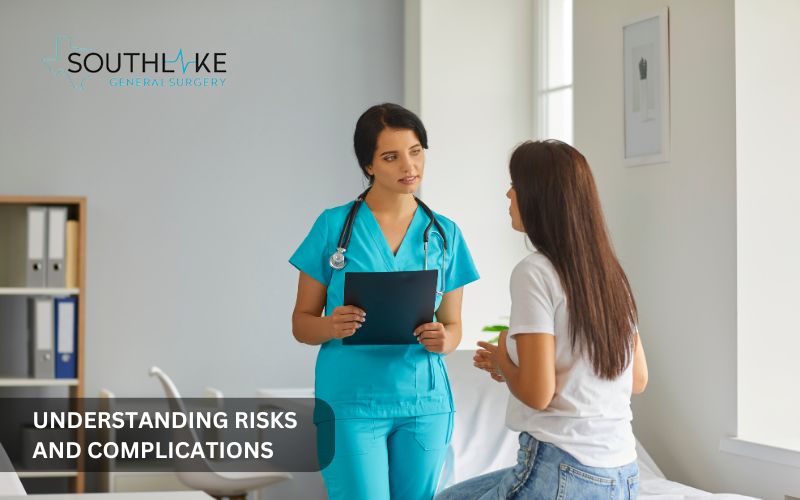
Talking about these risks and complications with your surgeon is essential. This conversation will assist you in arriving at a well-informed choice. Identifying and addressing any issues quickly is essential for a smooth recovery.
Potential Risks of Surgery and How to Lessen Them
Cholecystectomy, like any surgery, does come with some risk of complications. But these issues are usually uncommon. Here are some possible complications:
- Bleeding
- Infections at the incision site
- Bile leaks
- Injuries to nearby organs
- Bad reactions to anesthesia
It’s important to know about risks, even if they don’t happen often. When we understand these risks, we can find ways to reduce them.
Surgeons take several steps to lower the risk of complications. They check everything carefully before the operation. This helps them find any problems, like bleeding issues or allergies to anesthesia. During the surgery, they use careful methods and special tools. These steps help to prevent bleeding and keep other areas safe.
After the surgery, you need to watch for signs of infection. These signs may be fever, redness, or swelling near the incision site. Doctors may give you antibiotics and pain medicine.
This helps prevent infection and makes you feel better. Acting fast to notice and fix any issues can help you recover and get good results.
Identifying and Managing Post-Surgical Complications
Most patients feel better after the gallbladder removal. It is important to address any problems quickly after the surgery. A rare issue is the bile leakage from the bile duct, and this requires fast medical attention.
Patients might face digestion problems such as indigestion or diarrhea after losing their gallbladder. Adding foods back into their diet slowly can help improve these issues. Eating healthy is important too. Also, if the pancreas is nearby, it can lead to pancreatitis.
If you have a fever that stays, more pain, or feel sick and vomiting after surgery, you need to see a doctor right away. These signs might mean you have an infection or other problems.
It’s really important to keep in contact with your healthcare team after surgery. You can ensure speedy recovery by following these steps.
Conclusion
Cholecystectomies are surgeries that help with gallbladder problems. They can really improve a person’s life. With new techniques like laparoscopic cholecystectomy, patients can have safer surgeries and recover more quickly. It’s very important to follow care instructions after surgery to feel better fast.
Sometimes there can be complications, but removing the gallbladder often brings more benefits than risks. If you have gallbladder issues, contact an experienced surgeon like Dr. Valeria Simone for expert help. Don’t wait to take the first step towards better gallbladder health.
Make an Appointment
To make an appointment with Dr. Valeria Simone, MD, call +1 (817) 748-0200. Dr. Simone is a skilled surgeon at Southlake General Surgery in Texas, USA.
She focuses on cholecystectomies and uses advanced methods. This means you will feel less pain and recover faster. If you need open surgery or prefer a laparoscopic cholecystectomy, our healthcare team is here to help with your gallbladder care. Contact us today to start your path to better digestive health.
Frequently Asked Questions
Can I Live Normally Without a Gallbladder?
Yes, you can still live a normal life without a gallbladder. Your liver will keep making bile. This bile will move directly to your small intestine to help with digestion. It may take a little time for your body to get used to this change.
How Long is the Recovery Period After Cholecystectomy?
Recovery time can be different for everyone. After a laparoscopic cholecystectomy, many people feel ready to go back to work the next day. They usually feel mostly healed within a week. On the other hand, an open cholecystectomy takes longer to recover. Most people can return to physical activities in a few weeks.
What Dietary Changes Should I Expect Post-Surgery?
You do not need a special diet after surgery. However, it is a good idea to have a healthy eating plan. At first, it might be best to stay away from fatty foods. This can help your body digest food better as it adjusts to changes.
Medically Reviewed By: Dr. Valeria Simone MD
Board-certified General Surgeon at Southlake General Surgery, Texas, USA.
Follow us on Facebook and YouTube.
References:
- Radunovic, M., Lazovic, R., Popovic, N., Magdelinic, M., Bulajic, M., Radunovic, L., Vukovic, M., & Radunovic, M. (2016). Complications of Laparoscopic Cholecystectomy: Our Experience from a Retrospective Analysis. Open Access Macedonian Journal of Medical Sciences, 4(4), 641–646. https://doi.org/10.3889/oamjms.2016.128
- Roslyn JJ, Binns GS, Hughes EF, Saunders-Kirkwood K, Zinner MJ, Cates JA. Open cholecystectomy. A contemporary analysis of 42,474 patients. Ann Surg. 1993 Aug;218(2):129-37. doi: 10.1097/00000658-199308000-00003. PMID: 8342992; PMCID: PMC1242921.
- Reynolds W Jr. The first laparoscopic cholecystectomy. JSLS. 2001 Jan-Mar;5(1):89-94. PMID: 11304004; PMCID: PMC3015420.
- Hassler, K. R., Collins, J. T., Philip, K., & Jones, M. W. (2023b, January 23). Laparoscopic cholecystectomy. StatPearls – NCBI Bookshelf. https://www.ncbi.nlm.nih.gov/books/NBK448145/
- Website, N. (2024d, January 29). Gallbladder removal. nhs.uk. https://www.nhs.uk/conditions/gallbladder-removal/
- Open gallbladder removal: MedlinePlus Medical Encyclopedia. (n.d.-c). https://medlineplus.gov/ency/article/002930.htm
- Laparoscopic gallbladder removal: MedlinePlus Medical Encyclopedia. (n.d.-c). https://medlineplus.gov/ency/article/007371.htm

